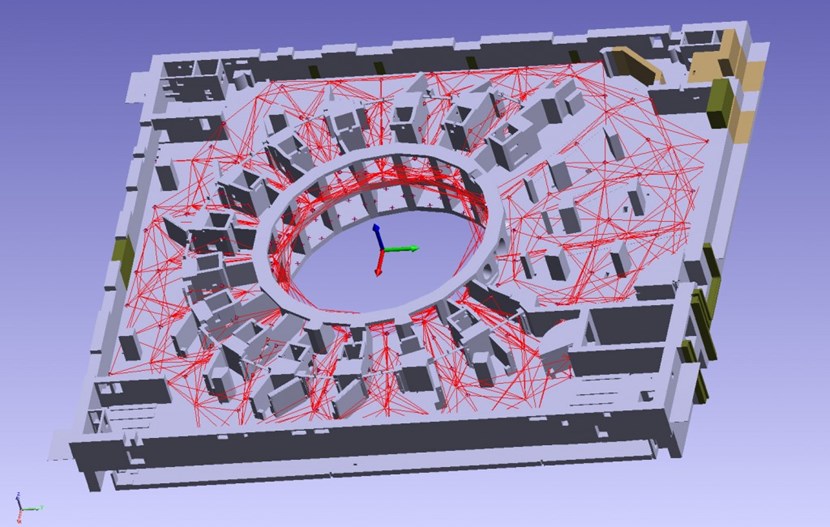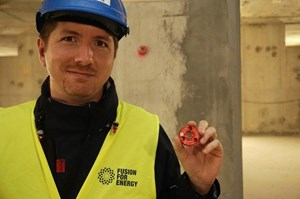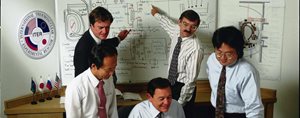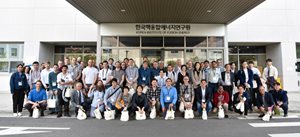
A vast network of fiducial target nests installed on the concrete surfaces of the bioshield, port cells and galleries will enable installation contractors to align components to sub-millimetre accuracy. Advanced software was used to lay out the positions of each instrument station and simulate clear lines of sight to the fiducial nests. This simulated measurement geometry was used to predict the measurement uncertainty to be expected, which was subsequently qualified with real measurement data.
In the same way that the primary survey network

Giacomo Calchi from the Fusion for Energy metrology team, shows us the size of a fiducial target nest—one of 2,000 to be installed inside of the Tokamak Complex. © F4E
Starting from detailed CAD (computer-aided design) data for the buildings, the team used specialized software* to design and simulate the in-building matrix, establishing the exact location of each instrument station and plotting fiducial nests with clear lines of sight. A large number of stations and nests were planned as a way to reduce the uncertainty in the calculations.







